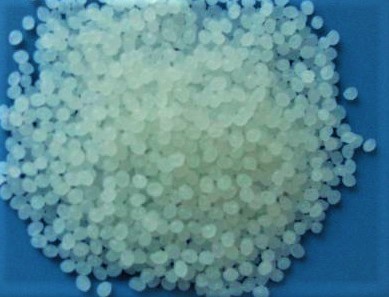A new market study published by Global Industry Analysts Inc., (GIA) titled "Polylactic Acid - Global Market Trajectory & Analytics" presents fresh perspectives on opportunities and challenges in a significantly transformed post COVID-19 marketplace.
Polylactic acid (PLA), also known as polylactide, is essentially a biodegradable polymer, aliphatic polyester and biocompatible thermoplastic. Owing to its compostable nature and recyclability, the material has attracted huge interest as an environmental-friendly alternative to petrochemical industry plastics (polyethylene, polystyrene and polypropylene). The biodegradable polymer is derived from several different renewable materials such as sugarcane or corn starch or tapioca roots and is extracted through bacterial fermentation.
With characteristics that are similar to common petrochemical derived plastics, PLA is an amorphous, resilient, rigid and UV-light resistant polymer material that is quick at absorbing moisture and is temperature-sensitive requiring storage under 122ºF. The use of PLA necessitates that exposure to ambient air is minimised so that its characteristic properties are preserved, owing to which PLA is typically made available in moisture-resistant containers such as foil-lined boxes that can avoid regain of moisture when shipped or stored.
Amid the COVID-19 crisis, the report from GIA estimates the global market for PLA estimated at $729.1 million in the 2020, is projected to reach $1.7 billion by 2026, growing at a CAGR of 15.4% from 2020-2026. Packaging, one of the segments analysed in the report, is projected to grow at a 17.4% CAGR to reach $869.2 million by the end of the analysis period. After a thorough analysis of the business implications of the pandemic and its induced economic crisis, growth in the textiles segment is readjusted to a revised 15.1% CAGR for the next 7-year period. This segment currently accounts for a 20% share of the global PLA market.

Market growth seen given strong industry demand
The PLA market in the United States is estimated at $218.8 Million in the year 2021. The country currently accounts for a 26.52% share in the global market. China, the world second largest economy, is forecast to reach an estimated market size of $203.8 million in the year 2026 trailing a CAGR of 19.9% through the analysis period. Among the other noteworthy geographic markets are Japan and Canada, each forecast to grow at 12.2% and 13.5% respectively. Within Europe, Germany is forecast to grow at approximately 13.8% CAGR while the rest of the European market (as defined in the study) will reach $241 Million by the close of the analysis period.
The report further states that the market will continue to benefit from strong demand from end-use industries owing to a number of factors. While the expanding market for ready-to-eat meals, packaged foods and snacks is compelling the food industry to use more of biodegradable materials such as PLA, the shift towards the material is led by its lesser carbon footprint. Due to its favourable benefits profile, leading as well as emerging companies are expected to make PLA capacity additions, which would help the PLA market perform robustly over the coming decade. The demand is expected to come from its large-scale application in rigid containers used for storing yogurt, juice, water as well as many other food products in the future.
Further, the demand is increasing from the flexible packaging sector, and other end-users such as textiles, packaging, transport and agriculture. The popularity of PLA can be attributed to the packaging benefits the material provides, and therefore finds widespread application in fibres, chemical products, rigid containers, coated paper and films, as well as carpets. In addition, the demand for PLA is increasing from the packaging industry in developed countries across North America, Europe and Japan. Besides the packaging and food industry, PLA is also finding use in various other applications in sectors including drug delivery systems, tissue engineering, long-term and temporary implantable devices, among other newly emerging areas of application. Clinically, PLA also finds use as a biomedical scaffold for implants, drug delivery systems and theranostics. Together, these factors are expected to create opportunities for wide scale use of PLA across several different industries in the coming years.
In the global automotive & transportation segment, the United States, Canada, Japan, China and Europe will drive the 12.2% CAGR estimated for this segment. These regional markets accounting for a combined market size of $78.6 million in the year 2020 will reach a projected size of $176.5 million by the close of the analysis period. China will remain among the fastest growing in this cluster of regional markets. Led by countries such as Australia, India, and South Korea, the market in Asia-Pacific is forecast to reach $17.7 Million by the year 2026, while Latin America will expand at a 15.1% CAGR through the analysis period. For more information, visit: www.strategyr.com.














